Seo agus Siud May 2019
RAMSGRANGE
Ramsgrange has had a long and varied history. It has had the distinction over the years of providing the area with elementary schools, a secondary level school with boarding, a domestic science college, a further secondary and boarding school in 1967 with the advent of free secondary education, and then a community school.
Established in 1871, Ramsgrange was the 2nd Foundataion that Genevieve made in Ireland after Bundoran which had been founded some months earlier. Ramsgrange was unique in that it maintained connections with Juilly through the two O’Sullivan sisters, Marianne and Clare and also Lizie Beale, Genevieve’s niece who had received most of her education in Juilly.
Ramsgrange
An overview of its long and venerable history, re-
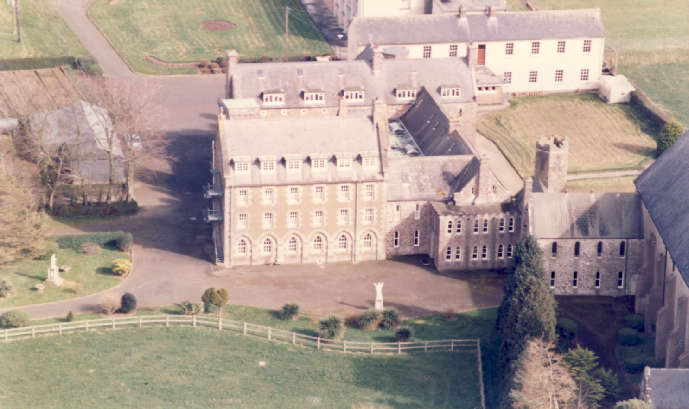
On 4th May a small group of four set out from Monaghan. This founding group consisted of Marianne O’Sullivan, one of the three O’Sullivan sisters from Cork who had entered in Juilly, Aloysius Lennon a young professed sister from Monaghan town, Columba Smith a novice from Clontibret and the nineteen year old Lizy Beale, Genevieve’s niece, who had followed her to Ireland. They arrived in Ramsgrange on 6th May having spent two nights in the Domincan convent in Kingstown, now Dun Laoghaire. Doubtless this was because Marianne’s brother Fr Tom O’Sullivan was then curate there.
In February 1871 a letter came to Monaghan from a Canon Doyle the p.p. of Ramsgrange looking for sisters for his parish. He suggested that the Monaghan superior should come on a visit to Ramsgrange to see the area and the accommodation he would provide for the sisters. Accordingly Mother Genevieve and Sr Marianne O’Sullivan undertook the two day journey to Ramsgrange. They were favourably impressed by what they saw and inspired by the enthusiasm and zeal of Canon Doyle. So the decision to found a community in Ramsgrange was made.
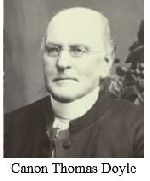

Pauline McGovern in “God Will It tells” us that
Mother Genevieve remained in Ramsgrange until late August, long enough to see the community settled down as comfortably as might be, and Lizy dressed in her postulant’s dress and cap. Throughout she took an active part in the work of the house, helping Mother Marianne to allot duties and arrange the horarium, meeting priests and well-
By end of 1871 the community had grown substantially. Two further sisters were sent from Monaghan and Marianne’s sister, Claire arrived in November. Her health was failing; she had had to retire from being superior in Bundoran and Mother Genevieve thought that Ramsgrange would be a gentler climate for her. Her arrival is described in the annals:
There were three postulants, one of them Lizy Beale who entered on the feast of St Louis. The Ramsgrange novitiate was formally constituted that autumn on the feast of St Stanislaus, 13 November 1871. Lizy was later to be given the name Alphonsus. We find her listed in the 1901 and 1911 census. In 1911 her age is given as 58. She eventually was made superior and died as Mother Alphonsus in 1931 aged 78. Her aunt Mother Genevieve, still in her mid fifties was to die in 1978 just six years into the development of the fledgling Ramsgrange foundation.
Poor dear Sr. Claire O'Sullivan, accompanied by her brother Fr. Tom O'Sullivan, Kingstown, arrived from Bundoran. She looks very delicate, but kind and good as ever.
Canon Doyle lost no time in getting education going in his parish. Barely a week after their arrival, the sisters received their first pupils in the decrepit remains of the old church which had been burned during the 1798 rebellion. 40 pupils came that first day.
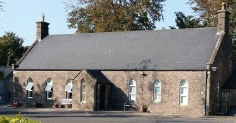
15 years later in 1886 a new school house at the convent gates was built and opened its doors to 68 pupils. This schools served the children of Ramsgrange for nigh on 100 years when the pupils transferred to the new Central school across the road.
The educational endeavours of the sisters were not confined to the village of Ramgrange. They went forth to teach in in 3 schools in the surrounding areas.
In 1894, they went to teach in in Ballyhack, a very deprived area. Thanks to a recently received legacy, they were able to buy a pony and trap for this journey. The Ballyhack school house built in 1896 still stands and is rented out on airbnb. The advertising blurb informs prospective visitors that the many of the original feature are extant down to ink marks on the floors.
To get back 1871, in Sept shortly after Mother Genevieve’s departure the sisters opened a private school and started taking in boarders. The Irish Catholic Directory for 1872 carried the following advertisement for the school. Incidentally the same directory has a similar advertisement for Monaghan (see both below)
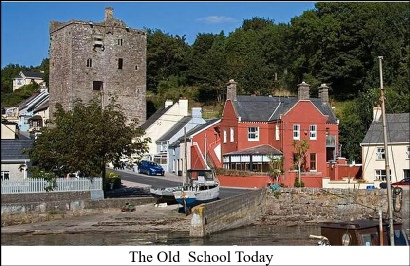
The indefatigable Canon Doyle set to building accommodation for the sisters and the school. He had earlier moved out of his own house to make it available to new community. By 1875 there was new accommodation for the sisters and the boarding school. The annals of the 26 September 1875 tell us that the:
. . . new apartments were blessed by Canon Doyle, to whose untiring exertions we owe them … all the new buildings are his own design, and were executed under his superintendence by workmen of the neighbourhood, the parishioners helping materially by drawing the stones from the quarry of Ballyhack. May Our Divine Lord accept all the work as done for Himself, and abundantly bless all our benefactors !
Mother Genevieve travelled again to Ramsgrange on 21 June for the official opening on June 25 of St Catherine’s convent, as it was then called. Mrs Beale, Genevieve’s mother was also present. Mrs Beale was likely a frequent visitor to her daughter. We have mention of her being in Cork when Genevieve was there, then in Juilly and also Monaghan. The annals section of the of the Irish Catholic Directory for 1872 describes the opening thus:
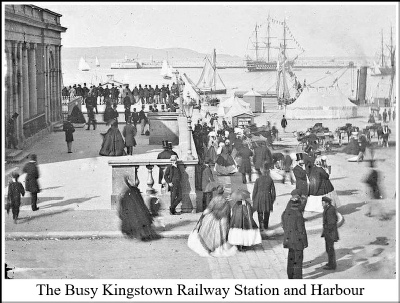
We take up the story with Gabriel’s extensive article in Link 1993
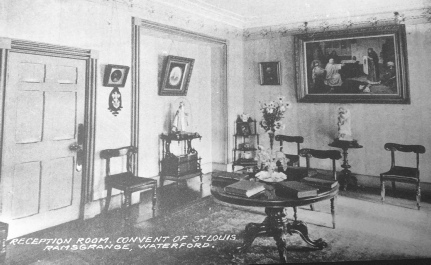
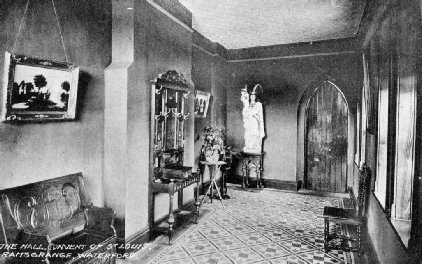
In 1884 a photograph of the then community was commissioned from Poole Photographers in Waterford.
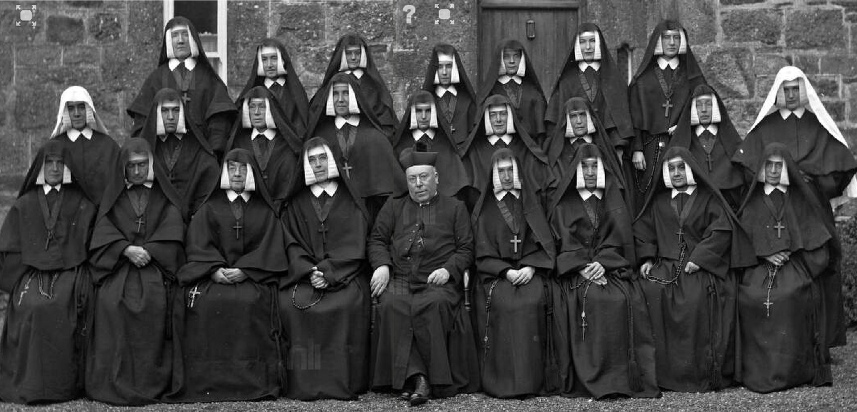
Continuing with Gabriel’s narrative:
The Boarding School flourished from 1871 to 1906, a total of 35 years. In the annals of the previous year, May 1905, we come to an entry “The Technical Board wished to set up some Technical school for the daughters of farmers, not for servants”. This latter distinction was made because some years previously, the annals tell us “Fr. Stafford of Kilmore wanted the Sisters to run a school for girls to be trained for domestic service”. The sisters turned it down and the plan came to nothing. But this new venture, the annalist tells us, “would teach the daughters of farmers proper methods of dairying and poultry-
An entry for May 1905 reads with something of a prophetic tone “the question to be considered is “are we to give up our boarding school and take on the Technical School, since technical teaching is so much needed”. There was clearly a great deal of discussion in the community, and six months later on December 2 1905 we are told “The decision has been made to change from a Boarding school to a Practical School”
It is too easy to see the entry as a fact of history, but those sisters must have felt the same anguish and sadness that is so familiar to us today as we try to recognize the moment when it is right to let go and move on.
So the following autumn two new highly trained teachers form the Technical Board, Misses Yeatman and Jones, arrived to initiate the first 30 girls into the course. And so began the 84 year history of the school that made Ramsgrange a household name in rural Ireland and especially in the south-
Students of the Practical School, as it was known for generations, were accommodated in the section of the school recently vacated by the boarders of 1906. A whole new life style took over, with girls getting up at the dawn for the milking, and moving to and from new areas of Poultry-
When the Practical School was 60 years in existence Free Secondary Education appeared on the scene. The local people of Ramsgrange made a strong plea to Mother Columbanus to have a secondary school in Ramsgrange and in September of 1967 the Teachers house, now divided into two classrooms welcomed 50 brand new children in brand new uniforms to start their post-
This school lasted ten years and was very successful. The annals give a feeling of a great hive of activity on the campus, with students of school and college (as the Practical School was now called) coming and going to the various activities. The Secondary School developed fast it got its own prefab building the following year and grew to number some 250 girls who still remember it with great affection. But mention of new developments comes about 1975 when we hear that “a site will be provided for the new Community School”. By summer 1977 the Community School was ready and the little St Louis Secondary School closed its door to the last pupils and was absorbed into the new school. The Secondary school, like its predecessor 70 years before, had disappeared.
The Home Economics College continued to flourish and expand on a magnificently maintained campus. At the peak of this success came faint rumblings of government plans to close down the Rural Domestic Economy schools across the country. So farfetched was the idea that nobody really took the rumour seriously. But in June 1984 the unbelievable happened with the Government decision to end funding for these schools which it no longer saw as necessary. It is hard at this distance and especially for those of us who were not there to imagine the impact of this announcement in the community, in particular for sisters whose whole life had been that of the College. And again the Annals, which can capture very well specific moments of history, read with stark simplicity: “The College closed today. Please God some worthwhile future will be found for it but only God can make good come of it”.
To finish, however I want to touch on some further information we have about the characters from those distant days
The original sisters would have been very conscious of their French origins. In the early community they had at least 3 sisters who had been in Juilly and would surely feel close to their origins. There were the two O’Sullivan sisters, Marianne and Claire who would have had their formation in Juilly and Lizzy Beale who had all her early education there. Marianne O’Sullivan was the first of the young Irish women to join the French community in 1842. Claire followed her into the novitiate some three years later. Marianne, the superior of the burgeoning community had been Mère Thérèse’s assistant for many years before she came to Ireland. She would have been very familiar with the ways of the French community and the thinking of Abbé Bautain and Mère Thérèse.
The Dail records for May of 1984 have Deputy Hugh Byrne TD for Co Wexford, declaring in the chamber:
I do not believe any group of colleges in any sphere of education could have given such excellent productivity as the rural home economics colleges. The teachers there are wonderful. I do not know if the Minister has met them, although the Minister of State has done so and concurs with my view. In Ramsgrange we have a wonderful principal in the person of Sister Matthias. She has been reasonable and very patient and has put all her energies into keeping open these colleges. The Ramsgrange College is in an excellent state of repair and anybody who visited it could only remark that it seemed to be very new, although it was in existence prior to 1900. This is a reflection of the way the Sisters of St. Louis have kept the college. The work done by religious has not been recognised.
Then there is the redoubtable Canon Doyle, a true hero of the Ramsgrange Story. He was a real man of the people and a priest of his time, pious, zealous, reactionary and devoted to the welfare of his parishioners, spiritual and temporal.
The annals entry on the day of his funeral in 1903 tells us that humility was his chosen virtue and St Alphonsus Liguori’s “Preparation for Death” his favourite and recommended reading. “He tried to introduce (it) to every home in his parish and asked people to have a chapter of it read after the rosary at night”. The annalist continues, “As long as he was able, he said the Rosary in public every evening in the church, and never ceased recommending it to his congregation. . . . We hope that we who were privileged to have a saint among us for so long will never forget the example he gave us, nor his wise instructions and advice.”
He was a member of the Land League and was fearless in the defence of his people against the injustices of landlords. He went to all evictions and attempted to negotiate with the authorities. There are stories about how he stood up to and confronted land agents, soldiers and the RIC and we are told by when the government of the day tried to tamper with the land rights of those priests who had supported the Land League, he transferred all his land to the Sisters.
He literally built the convent with himself as architect, bought up bits of land to add to the original farm. . . . And when the little schools were being built, he would call off the altar "Paddy Dowling is to bring a load of stones this week and throw them up at Powers’ gable" And each Sunday a different parishioner would get word at mass to get out his horse and draw a load of stones. And so that there would be no doubt whatever about the purpose he would add on “It’s not for me or for ye, but for your children”. And the people drew the stones and the schools were built.
We have two further glimpses of the Canon’s opinionated outspokenness, the first from the above mentioned sisters and the second is a reference I found online.
He was a forthright man who called a spade a spade, and when writing to the Jesuits (whom he greatly regarded) for missioners for the parish mission, he claimed he would always remind them “You needn’t be sending me any Johnny Raws to practice on my parish”.
Canon Thomas Doyle died in 1903. A measure of the esteem in which he was held is the statue erected in his honour by his parishioners, bearing the inscription “A Saintly Priest and a Sterling Patriot.”
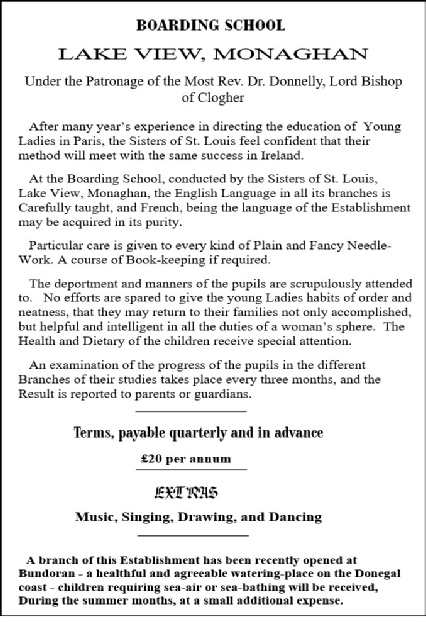
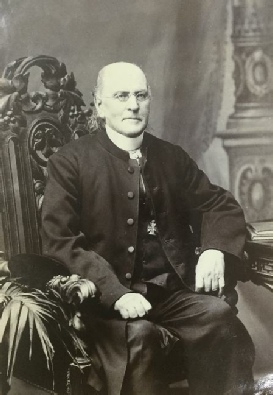
His care and concern for the poverty stricken is revealed in the memories of him handed down to Srs Aloysius and Berchmans in the above mentioned edition of Link: “In the very early days the Canon would come into the kitchen and ask if there’d be a few cups, even if they had no handle, poor Mrs. B could do with them or maybe someone could knit a shawl for that poor Mrs M.”
In a further paragraph they tell us:
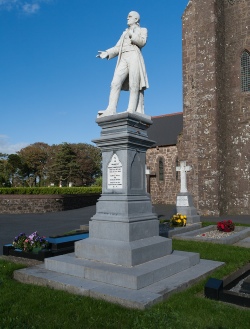
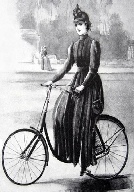
A contributer to The Dúchas Project for collecting local folklore gives us two more examples of the Canon’s reactionary views. She tells us that “when caps came out first as a head-

The Dúchas Project contributer adds that “before his death he took more kindly to women on wheels!”
In an 1897 edition of the Enniscorthy Guardian, the Canon condemns the fashion of females “gadding about on the roads on wheels, to the shame of all virtuous and modest women, and to the disgust of all sensible men” declaring that the heroes of Ireland’s past had no need of bicycles. He continues in that edition with an impressive display of learning and oratory:
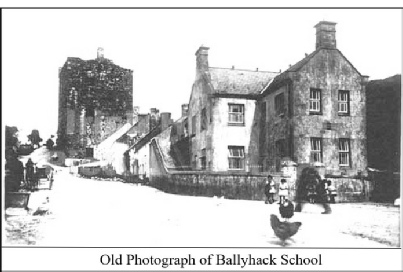
These early entries paint a picture of the same leisured tranquility that was a feature of the 19th century boarding school, where life was orderly, tranquil and unhurried… There was a lot of music in the school, and regular exhibitions of pupils work. We read that it took from morning until late evening for the Piano candidates to travel for the examination to Bunclody and back! There was French, and there was Science, the annals tell us in 1899 “the man came from Waterford to set up the laboratory in the Reception room”. Going to Waterford one went by steamer like the Boarders from Waterford who “were allowed home to witness the visit to their town of King Edward the Seventh and Queen Alexandra”!
The heroes of Clontarf who swept the Danes into the sea, never saw a bicycle, neither did the magnificent men of Athlone. The glorious men and women too of Wexford never wobbled on wheels. Where were your wheels when an almost unarmed peasantry, under Father John Murphy, annihilated the brutal North Cork on Oulart Hill? ….The heroine of Bree in 1798, who wrested the bayonet from the wretch who would dishonour her, and pierced him through the heart, required no wheel to develop her muscular strength. The muscles of that peasant woman had been developed by honest labour and her love of holy purity strengthened her to avenge her honour.
Page 1

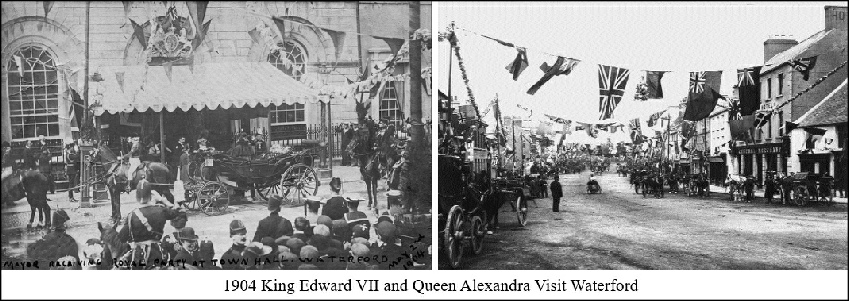
The Entrance Hall and Parlour Furnished and Decorated in the Style of the Time
Here we see a community of 25 including the two novices. Is that Marianne Sullivan to the right of the Canon and could that be Lizy Beale directly behind the Canon Doyle? We are told Lizy was slight of stature and build. She would have been about 32 in 1884.
A Saintly Priest and a Sterling Patriot
The above is a recounting of the history of Ramsgrange up until the 1980’s brief and incomplete. What is lacking is the subsequent development of the campus and the personal memories of the sisters who have lived there. Seo agus Siud would love that in later editions of we could publish accounts and memories from individuals who have lived in Ramsgrange at any time in its recent history. This is a request for some personal accounts, please. Barbara McArdle
Barbara McArdle
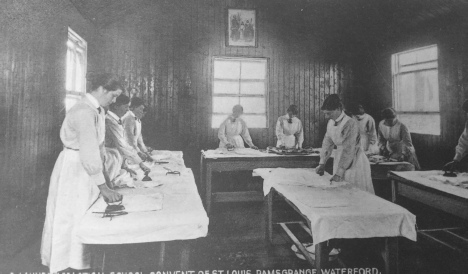
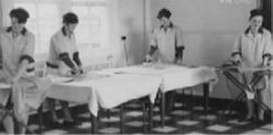
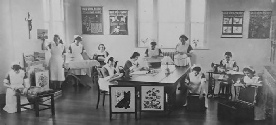
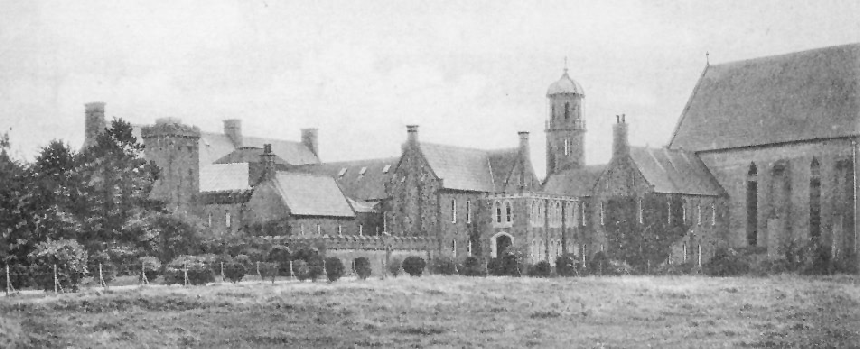
There was also the connection with their brother Fr Tom O’Sullivan, who had been trained for the priesthood in France and was for a time one of the St Louis Fathers. He had accompanied the Abbé Bautain as interpreter on his visit to Ireland in 1859. Later in 1862 he returned Ireland and for a time belonged to the Dublin archdiocese. In 1865 was transferred to Kingstown. He was a frequent and popular visitor to Monaghan and later to Ramsgrange where he spent all his holidays. It was at the end of his summer visit in 1880 that his health which had never been good failed him and he fell seriously ill. He was nursed devotedly in Ramsgrange but died in early December 1880. His sister, Mother Marianne died some nine years later in in 1898
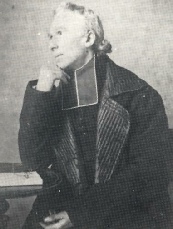
Fr Tom O’Sullivan
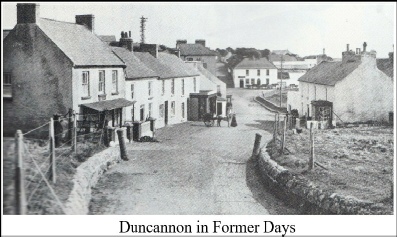
Shortly after this, the sisters commenced teaching in Duncannon, walking the two miles there and back in the early days. Some years later in 1903 we read in the Annals that the sisters “took charge of Shielbaggan School, and we got a present of a pony and trap”! When the first Compulsory Attendance Act was brought in in 1900 the annalist prays “God grant it will have some effect for the attendance is deplorable”. Srs. Kevin and Aloysius in the memories shared with Link (1988/89) speak of the great poverty in the region and children who were barefoot and ragged